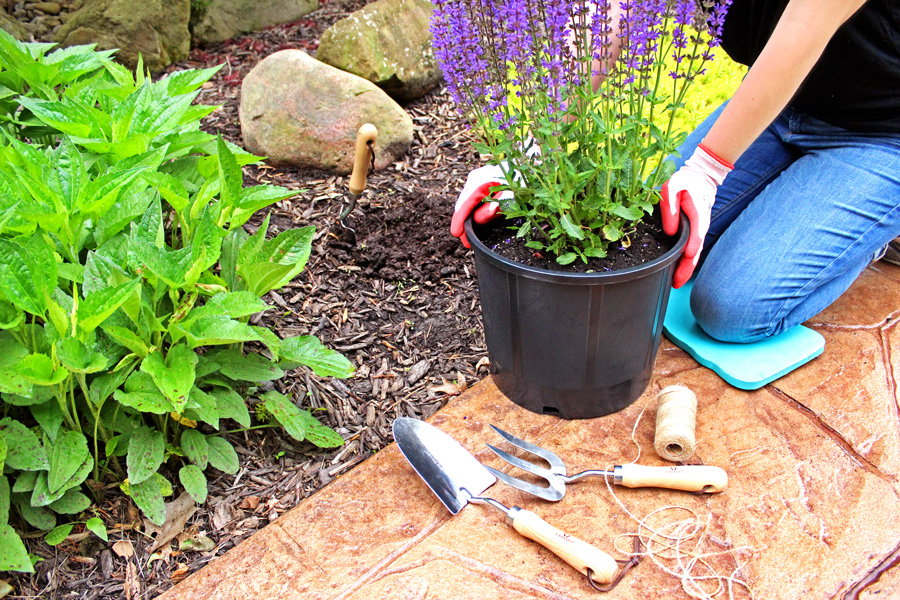The proper selection of plants as well as flower pots contributes greatly to the overall appeal and looks of a garden. The garden is appealing and at the same time, ensures that the selected plants flourish in the environment that they are placed. Whether you are a seasoned gardener or a novice, knowing how to pair a plant with a pot will enable you to enhance the aesthetics of your garden and achieve your goals.
Consider The Plant’s Development Needs
The initial process when combining garden containers is understanding the different demands of the selected plants. Different plants have different requirements in terms of usage of sunlight, water, and soil. For example, tropical plants need more water while succulent plants thrive in drier, better-draining soil. There are pots that can meet these demands such as terracotta pots for succulents that offer great drainage or a plastic pot for plants requiring more moisture retention.
The growth potential of the plant being containered is an important consideration for selecting a container. Planting larger plants such as small trees or some types of shrubs requires a larger root containment volume. If these larger plants are placed in a smaller container, the rate of growth and development will be negatively affected, resulting in their stunted health. For smaller plants, like herbs or annuals, compact and lightweight containers can help maintain healthy growth without overwhelming the plant.
Add Some Fun With Colours and Textures
One of the interesting aspects of gardening is the ability to play with texture and colour. The right combination of plants and containers can add layers of beauty to your garden. If your garden already contains striking and colourful flowers, planting them in pots that have a neutral base or earthy colours would give a balanced appeal to the garden. On the other hand, if the plants are going to be subtle and less colourful, then the pots need to have brighter colours and greater texture to make them stand out.
Every space is unique, and the various materials such as ceramics, metals, wood, and even concrete can create a certain feeling in the room. Wooden and weathered stone containers will always add warmth and charm for a rustic farmhouse look. And for a modern sleek aesthetic, glossy ceramic and metal containers with sharp lines can be used to enhance the overall design. Never shy away from blending materials to create visual interest, but ensure that the colours and textures complement each other to achieve a cohesive design.
Keep in Mind Climate and Location
Another factor to consider when choosing the right container for your plants is the weather and climate around your area. If the plants will be left exposed to the elements throughout the year, choose durable weather-resistant containers. These types of plants can be placed in homes or outdoors. Resin and fibreglass pots are perfect choices, as they do not crack in harsh weather. This makes them ideal for locations where winters are cold and summers are extreme.
If you are situated in a windy region, it is necessary to use robust containers in order to stave off any chances of the containers toppling over. Try to select containers that have integrated drainage to stave off water logging, which could destroy the roots. However, lightweight containers such as those made of fabric or plastic can be perfect for balcony gardens or small patios where light and easy to move options are necessary.
Groupings Pair for Aesthetic Appeal
Grouping plants in containers can pose a stronger visual appeal when trying to tend to plants that are in the same container. A carefully planned arrangement of plants with different shapes and sizes in combination with varying containers can create a voluminous and layered look. For instance, ornamental grasses as well as flowering vines are great examples of tall plants that should be placed at the back of a container arrangement while trailing ivy and petunias are great options for smaller plants that can be placed in front. This layered look aesthetically aims the eye upward and offers a sense of depth.
Another way to make a participating group more interesting is to include plants of different shapes and sizes. For example, pairing the vertical stripes of a cactus with the delicate curves of fern leaves can create an interesting contrast that is as eye-catching as blending a flower with larger leaves bold alongside delicate florals will create balance and make for… overall a more interesting display
Consider the changing times
It’s important to remember that the combination of plants and containers is not static—it can evolve over time. Bright and colorful flowers in pots are perfect for spring and summer. But as seasons change, consider changing your plants to fall or winter flowers like roses, pansies, or evergreens. With containers that are easy to replace, you can keep your garden fresh and beautiful all year round.
conclusion
Combining the right plants with the right pots to maximize impact is a practical exercise that combines creativity with practical gardening skills. By considering the needs of your plants, playing with color and texture, considering the weather, and considering, you can create a visually appealing and maintainable garden The possibilities are endless, if you combine the ideal your outdoor space can be is a real haven for plants and people.

